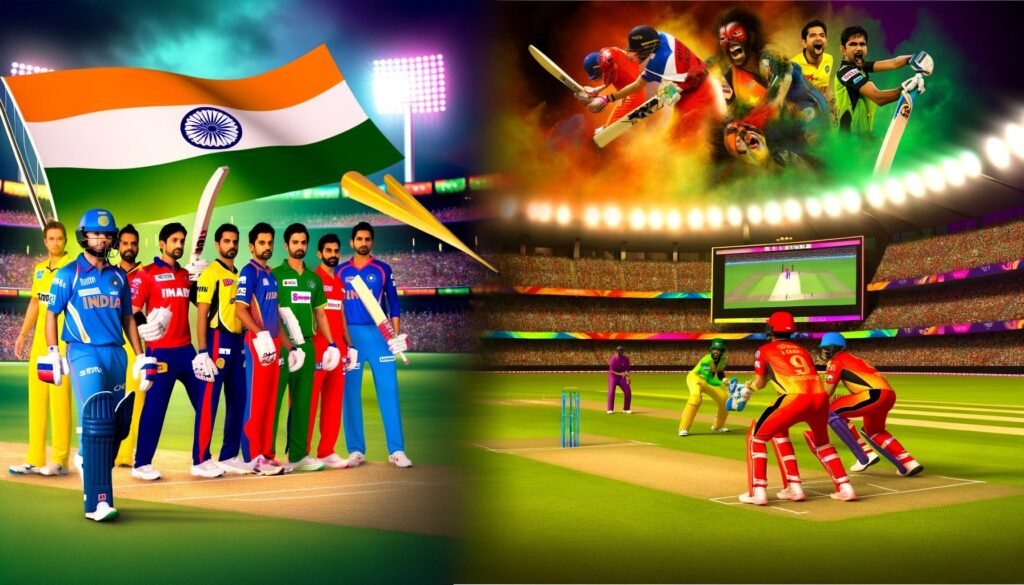
Why International T20 Cricket Lags Behind Franchise Leagues
The Evolution of T20 Cricket
The recently concluded edition of the Indian Premier League (IPL) sparked conversations about the future direction of T20 cricket. Teams posted astonishing scores and some even chased them down in the same match. The 2024 IPL season recorded an average tournament strike rate of 150.58, the highest in its history. This prompted discussions about the game’s evolving nature and the necessity for adaptation. The consensus was that some would lead this revolution, while others would struggle to keep up.
Polarising Opinions and Recency Bias
As the T20 World Cup approached and national squads were announced during the IPL, there were strong opinions about certain inclusions and omissions. The aggressive brand of cricket on display influenced these opinions. Cricketers, however, are shaped by circumstances as much as by instinct, with the former often taking precedence when the stakes are high.
Contrasting Strike Rates
Interestingly, the last two T20 World Cups have been the slowest in terms of strike rates. The most aggressive batters in franchise cricket seem to restrain themselves when playing for their national teams on the global stage. Factors like rule innovations, conditions, and reduced margins for error contribute to this discrepancy.
What the Data Reveals
There is a stark contrast between strike rates in the IPL and the T20 World Cup. IPL strike rates have generally trended upwards over the years, with occasional dips during the 2009 season (held in South Africa) and the 2021 season (held in the UAE due to the COVID-19 pandemic). Conversely, T20 World Cup strike rates have shown more variability without a consistent trend. The lowest strike rate was recorded during the 2021 World Cup in the UAE, mirroring the IPL’s performance in the same year due to similar conditions.
Conditions and Scoring Rates
Conditions significantly impact scoring rates. For instance, the 2016 T20 World Cup held in India saw a spike in strike rates due to flat pitches. The inaugural 2007 edition was an anomaly with younger players adjusting to the new format. Subsequent World Cups saw a drop in strike rates until a change in approach by India led to more aggressive play in the last two editions.
Comparing Individual Performances
When comparing individual strike rates of top scorers in T20 World Cups with their IPL performances, only Sri Lankan players Mahela Jayawardene and Tillakaratne Dilshan had better World Cup strike rates. Aggressive hitters like Chris Gayle, Jos Buttler, and AB de Villiers showed a clear drop in strike rates during the international competition.
Factors Behind the IPL’s Quicker Pace

Bigger Stakes
The IPL carries pride and prestige, but the World Cup is a grander stage with more at stake. The infrequent nature of the World Cup adds to its value. National pride and increased jeopardy make teams and batters play more cautiously. A similar trend is seen in football, where the FIFA World Cup is lower-scoring compared to the Premier League.
Tournament Length
The IPL features 74 matches with each team playing a minimum of 14 games, allowing for aggressive play. In contrast, the 2024 T20 World Cup has only 55 games, with teams assured of just four group games. A shorter tournament with fewer games makes aggressive play riskier.
Consistent Conditions
IPL batters face familiar conditions as the tournament is almost always held in India. This familiarity aids in easier run scoring. However, the T20 World Cup rotates host countries, forcing batters to adapt to varying conditions, reducing risk-taking and strike rates.
Home Advantage
IPL teams benefit from home venues tailored to their strengths. In the latest IPL season, teams like Sunrisers Hyderabad and Kolkata Knight Riders maximized their scoring at home by setting up favorable conditions. In the T20 World Cup, only the host nation enjoys this advantage.
Uncapped Players
The IPL’s rule limiting teams to four overseas players means reliance on uncapped players. This allows experienced batters to dominate less experienced bowlers. In contrast, the T20 World Cup has no such restrictions, resulting in stronger bowling attacks.
Rule Innovations
Recent IPL seasons saw a spike in run-scoring due to the ‘Impact Player’ rule, allowing teams to play more aggressively with the safety net of an extra batter. The Big Bash League also introduced innovations like the floating two-over PowerPlay (Power Surge) and the X-factor substitution, aiming to enhance the sport’s appeal.
Conclusion
The IPL’s faster pace compared to the T20 World Cup can be attributed to factors like stakes, tournament length, conditions, home advantage, uncapped players, and rule innovations. Despite the differences, both formats have their unique appeal and challenges, ensuring a place for diverse playing styles in the evolving landscape of T20 cricket.(Dubai7 realmoneygame)
